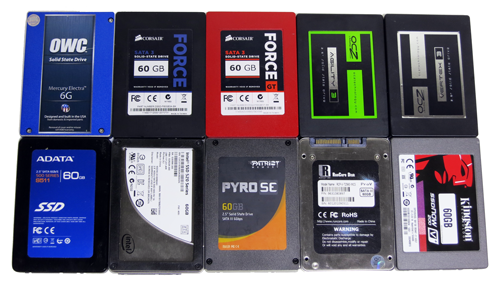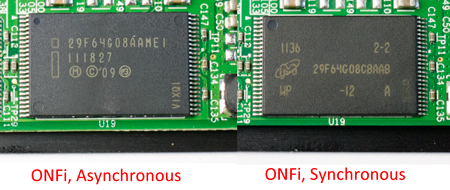Ten 60 GB SandForce-Based Boot Drives, Rounded-Up
The Great 60 GB SandForce SSD Round-Up
Hardly a month goes by that we don't see another SSD launch into an already-crowded market. Most of the time, the introduction centers around a SandForce controller, and there's a good reason for that. The company's technology is fast. It's also designed to work alongside lower-quality flash memory, if need be, driving down the costs of SSDs at a time when price is the primary barrier keeping enthusiasts from adopting solid-state storage.
More than one year has passed since the controller company launched its line-up of second-generation logic, and its solutions are still at the top of their game. OCZ was the first vendor with a SandForce-based desktop-oriented drive way back then. And within the last 30 days, Intel even threw its hat into the ring with its SSD 520, built on top of the very same controller, but complemented with the company's own cherry-picked NAND. Truly, SandForce deserves kudos for remaining a relevant force, even in the face of newer controllers from competing sources.
Although the vendors selling drives centering on SandForce's hardware often sit at the top of our benchmark charts, there are, admittedly, a lot of them. On one hand, that's a good thing. Competition between many similar products pushes prices down as low as they can possibly go. But as you see in the picture below, consisting of only 60 GB SSDs, the number of choices can quickly get overwhelming.
Are all of those drives exactly the same? Decidedly not. Although each SSD employs the same controller and boasts the same capacity, there is a limited number of knobs and dials that vendors can tweak to affect pricing and performance. And that's the idea behind today's round-up. We want to explore how one SandForce-based drive differs from the next, and hopefully end up with a better idea of the 60 GB drive you'd want to boot from in your next PC.
On deck, we have:
- Adata S511 60 GB
- Corsair Force 3 60 GB
- Corsair Force GT 60 GB
- Kingston SSDNow V200+ 60 GB
- Intel SSD 520 60 GB
- OCZ Agility 3 60 GB
- OCZ Vertex 3 60 GB
- OWC Mercury Electra 6G 60 GB
- Patriot Pyro SE 60 GB
- RunCore Pro V 60 GB
As we dig into these 10 SSDs, know that there is a performance hierarchy distinguishing drives based on SandForce's controller hardware. Generally, two SF-22xx-based SSDs of a given capacity perform almost identically, provided that they both employ the same NAND interface. Vendors do use different NAND, though, and that's why there is variation between drives centering on the same controller hardware.
Second-gen SandForce SSDs are available with different flavors of memory, and this is their order of performance, from highest to lowest.
Get Tom's Hardware's best news and in-depth reviews, straight to your inbox.
- SandForce controller with Toggle DDR NAND (Mushkin Chronos Deluxe, Patriot Wildfire, OCZ Vertex 3 Max IOPS)
- SandForce controller with Synchronous ONFi NAND (OCZ Vertex 3, Corsair Force GT, Kingston HyperX)
- SandForce controller with Asynchronous ONFi NAND (OCZ Agility 3, Corsair Force 3, Mushkin Chronos, Patriot Pyro)
Right off the bat, we're able to sort our round-up into two groups: one that employs synchronous memory for better performance, and the other that uses asynchronous flash in order to save money.
| Synchronous | Asynchronous |
|---|---|
| Adata S511 60 GB | Corsair Force 3 60 GB |
| Corsair Force GT 60 GB | Kingston SSDNow V200+ 60 GB |
| Intel SSD 520 60 GB | OCZ Agility 3 60 GB |
| OCZ Vertex 3 60 GB | OWC Mercury Electra 6G 60 GB |
| Patriot Pyro SE 60 GB | Row 4 - Cell 1 |
| RunCore Pro V 60 GB | Row 5 - Cell 1 |
How significant is the difference between the various memory interfaces? From there, can we distinguish between the drives in one group or the other? We’ll let the benchmarks do the talking.
Current page: The Great 60 GB SandForce SSD Round-Up
Next Page Test Setup And Firmware Notes
